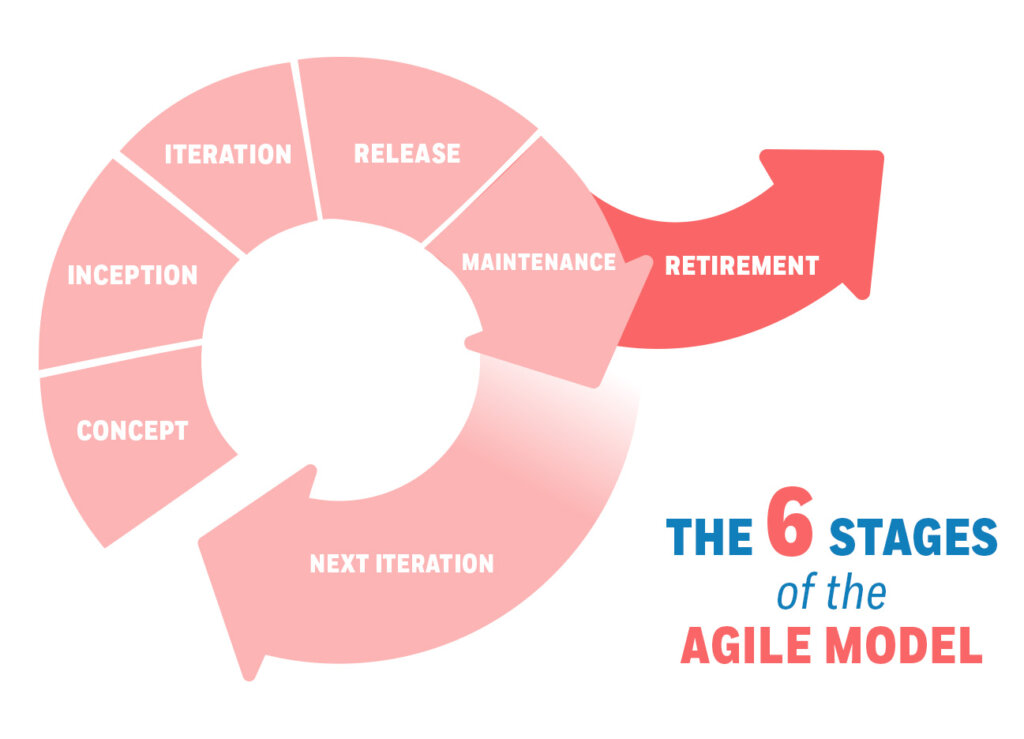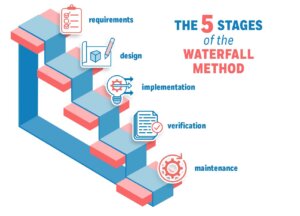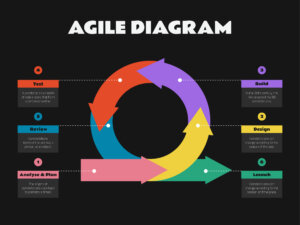Agile project management (APM) is a project philosophy that breaks projects down into iterations or sprints. The purpose is to produce bigger ROI, regular interactions with clients and end-users, and improved delivery of product features.
Today, Agile is used in virtually every industry from software development to real estate. Keep reading to learn more about Agile project management, how it can help projects succeed, and the different project management software that uses Agile today.
Key Takeaways: Agile Project Management
- Agile project management (APM) offers a flexible and innovative approach to managing projects by breaking them down into sprints.
- Agile projects help reduce risk and improve overall product quality by encouraging feedback at each stage of the process.
- In 2001, Agile was started by a group of 17 software engineers who created the Agile Manifesto, a set of values and principles that govern Agile.
- Agile project management has produced seven frameworks. They are Kanban, Scrum, Crystal, Lean, FDD, Extreme Programming, and the Dynamic System Development Method (DSDM).
- Of the seven Agile frameworks, Kanban and Scrum are the most widely used.
What Is Agile Project Management?
Agile project management (APM) is a project management method that divides work into sprints to help reduce risk and improve overall product quality with an open feedback loop between the project owner, team members, and customer.
Definition of APM
Used by product owners and managers worldwide, Agile project management offers a flexible and innovative approach to managing a project by breaking the project down into stages, also known as sprints. It is considered a flexible, iterative design and build process that does not rely on a pre-planned process, executed as the situation demands.
One major difference between the Agile framework and Agile workflow versus other methodologies is in its approach to adaptability to build projects and manage projects. Other project management methods conduct all planning before the project starts.
On the other hand, Agile project management methods rely on an iterative nature that accepts changes mid-way throughout the process with a face-to-face conversation between the project manager, scrum team, and clients.
How Does Agile Project Management Work?
In a typical Agile development cycle, there are several small cycles or sprints. Each phase contributes to project completion and comprises a product and sprint backlog. A sprint backlog consists of a list of tasks to be completed, revolving around planning, design, testing, and release. With every sprint, new features are added to each product.
According to VersionOne’s 13th Annual State of Agile Report, “97 percent of respondents reported that their organizations use Agile development methods—up from 80 percent in 2011”.
History of Agile
The earliest instances of Agile occurred around 1913, starting with Ford’s first Michigan automotive plant that reinvented the process of manufacturing with the first moving assembly line. The line assembled an entire vehicle from scratch, cutting the time spent building a car from half a day to less than two hours.
In the late 1970s with the advent of personal computers, consumer demand for electronic products hit an all-time high. This spurred the demand for effective project management systems for a customer’s competitive advantage. However, it continued to see a disparity between the client’s requirements and delivered projects with a nod to creating comprehensive documentation over client satisfaction.
In 2001, a group of 17 software developers led by Martin Fowler and Jim Highsmith created the Agile Manifesto, a document that drilled down four key values and Agile processes essential to project management and Agile projects.
In addition to the four key values, there were 12 additional principles based on customer satisfaction, streamlined delivery of the final product, dividing the project into sprints, and other Agile development methods its founders thought were critical towards completing a project.
Today, there are seven different Agile project management methodologies born out of Agile project management, which include Kanban, Scrum, Crystal, Lean, FDD, Extreme Programming, and the Dynamic System Development Method (DSDM) based on Rapid Application Development (RAD).
Why Choose Agile Project Management?
There are four major reasons for managing projects using Agile:
- High product quality.
- High customer satisfaction.
- Reduced risk.
- Better and faster ROI.
High Product Quality
One of the major reasons for choosing Agile project management over other methodologies is high product quality. High product quality takes into account demands by all stakeholders. Regular quality control testing is done throughout the project development process.
High Customer Satisfaction
High customer satisfaction is another reason to choose Agile project management over other methodologies. This high customer satisfaction refers to periodic updates made to each customer, continuous and fast delivery of each sprint, and accepting change requests by the customer.
Reduced Risk
Using the Agile methodology in any project reduces the risk of exceeding budget and surpassing a deadline. This is done with improved communication between the project owner, stakeholders (developers), and the client. There are daily or weekly scrum meetings that have each team member asking what they have achieved since the last meeting.
Agile also encourages proper risk assessment and response. For example, many software development teams classified risk by assigning a value to each risk to determine which ones to prioritize. These are known as risk burndown charts or risk probability and impact matrices. There are also different response strategies depending on the risk, such as avoidance, exploitation, transfer/sharing, mitigating/enhancing, and accepting.
With Agile methodologies, collecting feedback early on and incorporating quality assurance testing throughout the project all contribute to reduced risk.
Better and Faster ROI
One of the biggest benefits of an Agile approach is turning in a better and faster ROI for all types of projects, including software development projects. A reason for this is due to Agile’s iterative process, where the first iteration or sprint can offer new functionality that increases ROI. This is in contrast to waiting until the end of the project to introduce a new feature.
In an Agile environment, better ROI also extends to reduced costs, defects and delays. Spring cycles make it easy to identify and repair defects before they make it onto production.
Principles and Values of Agile Project Management
According to the Agile Manifesto, the four key values for Agile management are:
- Individuals and interactions over processes and tools.
- A working product is more important than comprehensive documentation.
- Customer collaboration comes before contract negotiation.
- Responding to change is preferred over following a plan.
Agile project management focuses on the importance of client communication and keeping the customer involved in all project phases. This is in stark contrast to the Waterfall development method that allows customers to provide feedback before and after work is completed.
Read: Waterfall vs Agile Methodology: What’s Better for Your Project?
Agile processes harness change, and unforeseen circumstances could include a revision to the final project scope, demand for extra features, and other customer-led feedback that alters time, cost, and resources.
Popular Agile methodologies adhere to the following 12 principles:
- Customer satisfaction through continuous delivery of the product.
- Divide large chunks of work into smaller and achievable tasks for quicker completion and easier integration of changes.
- Adhere to the decided timeframe for the delivery of a working product.
- Stakeholders must collaborate frequently to make sure the project is moving in the right direction.
- Create a supportive environment to motivate team members and encourage them to get the job done.
- Prefer face-to-face communication over other methods.
- Working software is the primary measure of progress.
- Try to maintain a constant pace indefinitely for development.
- Maintain the quality of the product by paying attention to details, leading to technical excellence.
- Maintain simplicity.
- Promote self-organization in the team.
- Regularly reflect on your performance for continuous improvement.
All of these project management Agile principles pay a nod to disciplined Agile delivery over traditional project management methods, dividing large volumes of work into smaller, manageable chunks, and getting buy-in from all stakeholders. It also believes in a customer-centric approach that demands face-to-face communication and gives team members a platform to speak on proposed changes.
Despite the changes to work, the goal continues to be producing all final deliverables, as evident by its “working software is the primary measure of progress” principle.
Lastly, a key Agile methodology principle is continuous improvement through iteration, where all mistakes are recognized and learned from. Many project managers may decide to engage team members in one-on-one or group sessions for this purpose.
6 Phases of Agile Project Management
The six phases/stages of Agile project management are:
- Concept.
- Inception.
- Iteration.
- Release.
- Maintenance.
- Retirement.

Concept
The Concept phase of Agile project management refers to determining project scope. In this stage, the product owner discusses all requirements and deliverables with the client, prioritizing a list of features in order of most to least important. All time, resources, and costs are factored in with a thorough and detailed analysis.
Inception
Inception in Agile project management refers to assembling the right development team to proceed. Team members will be identified and given all the tools and resources added to start the design process. The design process can incorporate mock-ups and light sketches of product infrastructure, taking input from the product owner, team members, and client. Consider this stage the brainstorming section.
Iteration
Iteration is the longest phase in Agile project management. The first iteration or sprint will produce a bare-bones foundation, whereas future iterations will focus on additional features and improvements. Remember, the goal of Agile product development is to conduct work in short cycles or sprints, with each sprint allowing enough time to gather feedback, assess new risks, and guide future iterations.
Release
Release in Agile project management refers to quality assurance. All checks are in place to evaluate the product and check for bugs, defects, and effective code. During this stage, developers are hard at work clearing out bugs and creating documentation and user training. Once the release stage is complete, the product’s final iteration can be released to the wild.
Maintenance
Maintenance is the critical stage where the product is fully available to customers by a development team and self-organizing teams. During this time, all product end-users are engaged with incoming documentation and user training by product builders. With Agile methodology demanding a dynamic systems development method, new iterations may often occur to upgrade the existing product for early and continuous delivery.
Retirement
In Agile project management, retirement refers to the time a product becomes expired, soon to be replaced with new software, or phased out altogether due to new business demands, a lack of sustainable development, increased competition, etc. These result in “end-of-life”: activities by developments, including withdrawing all support and notifying end-users the product is no longer available.
APM Methodologies
One of the benefits of Agile is its flexibility. Five popular Agile methodologies or frameworks used in Agile project management are:
- Scrum.
- Kanban.
- Extreme Programming.
- Lean Development
- Crystal.
All of these Agile methods and Agile project management practices have their own strengths and weaknesses connected with sprint planning and the composition of software teams.
Scrum
Scrum is a visual way of managing projects that groups tasks into columns based on progress. The technique helps teams work together and adapt to changes and problems by breaking the project up into chunks — these tasks are then worked on in sprints. With feature driven development, this allows only one sprint to be planned and managed at a time.
Kanban
Another one of the key benefits of Agile is powerful visualization tools. Kanban is a highly visual representation of projects that allows users to create a Kanban board and label tasks and subtasks into three key categories: “to do,” “doing,” and “completed.” Many popular project management tools like ClickUp and monday.com feature Kanban boards that use intuitive drag and drop functionalities to project cards. Consider the Kanban board a preferred choice for Agile team visual learners and designers.
Unlike Scrum’s Agile methodology, sprints are not planned and managed one at a time, but collectively.
Extreme Programming
Also referred to as XP, this framework works similar to Scrum but incorporates 12 supporting Agile approaches that are software-centric, which include:
- Planning games.
- Small releases.
- Customer acceptance tests.
- Simple design.
- Pair programming.
- Test-driven development.
- Refactoring.
- Continuous integration.
- Collective code ownership.
- Coding standards.
- Metaphor.
- Sustainable pace.
Lean Development
Lean development shares some of the same Agile project management methodologies as Agile with newer principles that include the following:
- Eliminating waste.
- Build quality in.
- Create knowledge.
- Defer commitment.
- Deliver fast.
- Respect people.
- Optimize the whole.
Crystal
Started by Alistair Cockburn, one of the original Manifesto authors, for a 1991 IBM project, Crystal is an Agile project management process that focuses on individuals and interactions, not processes and tools.
It is based on two beliefs:
- Teams can find ways on their own to improve and optimize their workflows.
- Every project is unique and always changing, which is why that project’s team is best suited to determine how it will tackle the work.
Some family members of the Crystal methodology include Crystal Clear, Crystal Yellow, Crystal Orange, and Crystal Red.
Frequently Asked Questions (FAQs) on Agile Project Management
Final Thoughts on Agile Project Management
There are many APM projects that can be used. Some notable types of projects include small to large software development, product development, and virtually any business where the deliverable can be produced in incremental sprints. Consider Agile even valid for opening up a new book store or upgrading a new franchise location.
Remember, all products could benefit from feature-driven software development thanks to collaborative working, shorter development cycles, and Agile practices. All of this can be achieved with improved communication between project owners/developers/clients, more frequent reviews, two-way communication, and a more collaborative work environment that values feedback.
To become proficient in Agile Development methodologies, there are several certifications available. Some of the more notable ones include PMI Agile Certified Practitioner (PMI-ACP) and the APMG International Agile Project Management certification. Both require a secondary degree and several hours of Agile training in addition to thousands of hours of general experience on project teams. With heavy study and real-world experience, these certifications enable you to become a scrum master.
Anyone working on Agile teams or looking to understand and use Agile principles in project management is encouraged to obtain PMI Agile Certified Practitioner (PMI-ACP) or APMG International Agile Project Management certification. Many members of teams work with these certifications on hand.
 Sections of this topic
Sections of this topic












